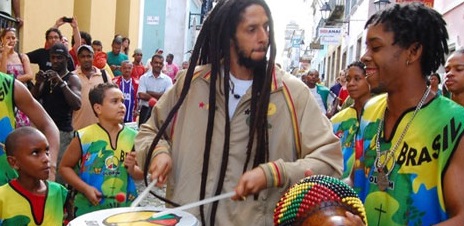Born in Jamaica, inspired by mento, ska, jazz, soul and rhythm and blues, reggae would quickly seduce a Brazilian Nordeste already keen on African sounds.
Reggae, a contemporary music in Brazil, developed strongly in Maranhão before its association with samba created a very dynamic and joyous artistic genre, making it popular throughout the country.

São Luis, the “Brazilian Jamaica”
As early as 1970, reggae was spreading widely throughout the Caribbean and its radio broadcast reached the region of São Luis, in northern Brazil. In this ancient colonial city emblematic of the triangular trade, the Afro-American rhythms of this new music have a historical resonance while seducing the population with their romanticism.
With the emergence on the national scene of many groups in the city in the 1980s, São Luis is the sacred capital of reggae in Brazil. The organization every two years of Maranhão Roots Reggae, a festival of global reach, further enhances its prestige.
The festive and joyful samba reggae
In Bahia, under the influence of Antonio de Souza, reggae has been mixing with the main holiday attraction; samba, since 1979 to offer a more danceable and frenetic musical genre. Based around an orchestra of 3 or 4 overdos (cylindrical metal drums), it offers very syncopated interpretations with 90 to 120 beats per minute.
It is frequently accompanied by caixas, tamborims and atabaques. Merry and spectacular, it is a must during the entertainment of the carnival of Salvador. Samba reggae is also a strong element of candomblé, a religion that brings together African beliefs and Catholic rites.

An artistic genre with dazzling success
Gilberto Gil and Caetano Veloso were part of the 1970s precursors of “Brazilian style” reggae, but it took less than 20 years for the tunes of Central Africana, Karetas, Olodum and Natiruts to make a musical genre major.






